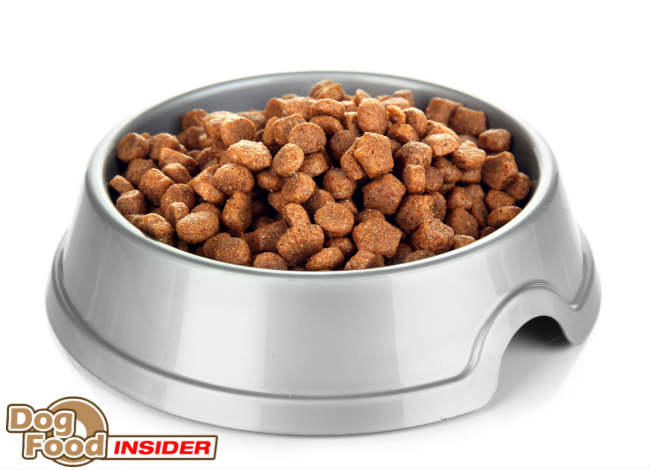
This post may contain affiliate links. We are compensated for referring customers to our affiliate partners.
Below you will find the kinds of questions we ask when reviewing a dog food so we can determine its quality and whether or not we can recommend it to pet owners.
Dog Food Checklist
Does the food have good sources of animal protein?
Biologically, dogs are carnivores, even though they have some of the habits of omnivores and like to scavenge. They can digest meat sources of protein much more easily than plant protein. For the most part, the higher in quality the meat protein is, the better it is for your dog.
How does the food handle grains or carbs?
This is a contentious subject today. It’s true that wolves and dogs in the wild don’t eat grains. However, they do eat partially-digested plant matter when they eat the stomachs and intestines of prey animals. So wolves and dogs do consume some carbs in their diet. For dogs to obtain nutrients from vegetables or grains, which are the sources of carbs, they need to be prepared in a way that makes it easy for dogs to digest them. That happens when dogs eat partially-digested food in a prey animal’s stomach, for example. It can also happen when grains are slow-cooked at low temperatures or when vegetables are pureed. Some grains are of better quality than others and some are easier for your dog to digest. All of these things have to be considered when we evaluate a dog food. We don’t consider any grain or carb to be automatically “bad.” Even grain-free foods use carbs in their formulations.
Is there “splitting” of grain sources in the food?
Splitting refers to the practice of using the same ingredient in several different versions. For example, whole ground corn, corn gluten, and corn meal are all versions of corn. They may appear lower down on the ingredient list so you don’t see them at first. You might look at the first few ingredients and think the food looks good. But if you add up all the corn in the food, you might discover that, by weight before cooking, there is more corn in the food than any other ingredient. Splitting is usually considered a deceptive practice on the part of a dog food company. There can be different reasons for using an ingredient in different forms – for protein in one instance, as a carb in another instance – but it’s generally not a good sign.
Although humans have been taught to think of fat as something bad in the diet, fat is a good ingredient in your dog’s diet. But only if the fat comes from a good, named source. By “named source” we mean “chicken fat,” for example. You want to know what kind of animal supplied the fat as specifically as possible. When the fat source is unnamed it could come from undesirable sources. If the fat says, “animal fat” or “poultry fat” you can’t be sure where the fat comes from and it is not of the same quality as a named fat.
Are the fat sources from animals or plants?
Fat sources from animals, particularly named animal sources, are better than plant fat sources. For example, salmon oil is much better than flaxseed oil, even though both oils can supply Omega-3 fatty acids. The animal sources of fat are better for your dog.
Does the food use generic sources of protein or fat?
Generic sources of protein or fat can come from anything. If something says, “animal meal” it could be a conglomeration of any kind of animals. You should always prefer named sources of protein and fat.
Does the food use meat by-products or meat digest?
“Meat” is a generic term when it is used on a dog food label and by-products and digest are typically less desirable parts of animals. So “meat by-products” and “meat digest” are not good ingredients to see in a dog food ingredient list. We evaluate “chicken by-products,” “chicken digest,” and other ingredients as we encounter them in foods. These are named sources but they are usually of lesser quality because they are by-products and digest, unless there is some other information provided.
Does the food have an excessive amount of fiber for the dog’s condition and life stage?
Most commercial kibble dog foods have a fiber content between about 3.5 percent and 4.5 percent, unless the food has been created for some particular health problem that requires a higher fiber content. When we see a food that has a much higher fiber content we note it. These foods often seem to have a great deal of plant and/or vegetable material in them. They may contain a lot of cellulose. In our experience, foods that have a lot of cellulose can cause dogs to have problems with diarrhea.
Does the food use natural or artificial preservatives? (BHA, BHT, ethoxyquin?)
BHA, BHT, and ethoxyquin are all artificial preservatives that are sometimes used in dog foods. Ethoxyquin may not appear on a dog food label but it is sometimes used to preserve fish meals before the fish reaches the dog food company, so they are not required to list it on the label since they did not add it to the food. All of these ingredients have been linked to cancer and other health problems.
Does the food contain sugar or artificial sweeteners?
Dogs don’t need sugar or artificial sweeteners in their food and these ingredients are usually only added to make the food tastier. You should note that beet pulp, which is sometimes used in dog foods, is not a sweetener. It is an insoluble fiber. It is leftover from sugar beets after the sugar has been removed.
Does the food use artificial coloring or dyes?
Dogs don’t need dyes or artificial coloring in their foods either. These are sometimes added simply to appeal to consumers. It’s best to choose food that doesn’t have these colorings since some of them have been linked to cancer.
Does the food contain pre- or probiotics to help with digestion?
Pre- and probiotics can help with your dog’s digestion. Chicory and lactobacillus acidophillus are common ingredients added to dog foods today, among others.
Does the food have any added supplements that might benefit a dog? (Glucosamine and chondroitin sulfate, for example.)
Some foods add supplements such as chondroitin sulfate and glucosamine, which help with joint issues. There are also foods that add a supplement to discourage poop eating; and there are others. Many foods add a chemical to prevent your dog’s urine from turning your grass brown. It’s debatable how much these supplements really work. The problem is that dog food is made in enormous vats. The chemicals are added and stirred through. But there is no guarantee that your bag of food has the correct amount of the chemical to help your dog. If you really want to help your dog with one of these problems you are usually better off buying your own supplements and giving them to him yourself.
Does the food contain Taurine?
Many dog foods today are adding taurine to their recipes. Cat owners became aware of the importance of taurine in the 1970s and ’80s when cats fed exclusively a cat food diet began to have taurine deficiencies and health problems associated with it. Cats are obligate carnivores – unlike dogs. They must eat meat in their diet and they are unable to synthesize some amino acids, including taurine. Dogs are not quite the same as cats. They are also carnivores but they can synthesize some amino acids. They can synthesize taurine but when it comes to some heart problems, especially with some breeds, dogs can benefit from added taurine. Boxers, Cocker Spaniels, and some other breeds seem to need extra taurine.
Does the food use chelated minerals?
Chelated minerals are minerals in a more digestible form. Your dog’s body can absorb them more easily than minerals in other forms. On the label you can look for terms such as “chelated,” “sequestered,” “amino acid chelate,” “amino acid complex,” proteinate,” or “polysaccharide complex.” For a good explanation, you can check out the Dr’s. Foster and Smith website.
Does the food meet AAFCO specifications?
AAFCO stands for the Association of American Feed Control Officials and they are one of the governing bodies that oversees pet food labeling in the United States.
AAFCO recognizes three methods for proving that a food is nutritionally adequate:
- Laboratory analysis
- Finished product is compared to minimum nutritional values established by AAFCO Nutrient Profiles for dogs or cats.
- Label states: “ABC Dog (Cat) Food is formulated to meet the nutritional levels established by the AAFCO Dog (Cat) Food Nutrient Profiles for (appropriate life stage).”
- Feeding trials
- Finished product that has been laboratory tested is fed to dogs or cats according to AAFCO protocols.
- Label states: “Animal feeding tests using AAFCO procedures substantiate that ABC Dog (Cat) Food provides complete and balanced nutrition for (appropriate life stage).”
- Analysis comparable in nutritional adequacy
- Laboratory analysis of finished product is compared with nutritional values from a similar product fed to dogs and cats according to AAFCO protocols.
- Label states: “ABC Dog (Cat) Food provides complete and balanced nutrition for (appropriate life stage) and is comparable in nutritional adequacy to a product which has been substantiated using AAFCO feeding tests.”
- Six-month feeding trials are considered the best way to substantiate a food’s nutritional value but they are the most expensive method for a company.
Does the food contain any controversial ingredients? (Menadione/synthetic vitamin K? Pea fiber? Tomato pomace?)
Many dog foods today contain controversial ingredients. Even some of the most acclaimed foods contain controversial ingredients. We look at all of the ingredients in the ingredient list, including ingredients that might make you question a food.
Do I like what I know about this company? Or do they have frequent recalls or bad manufacturing practices?
We check the FDA’s list of past recalls to see if the company has had recalls previously. We also search for current information about recalls and news about the company.
Is this a food I would feel comfortable feeding to my own dogs?
I’m the reviewer and I have five dogs. I’ve tried lots of these foods myself or I have friends that feed them. I always consider whether I would want to feed this food to my own dogs.
Additional Notes About Our Dog Food Reviews (Stuff Our Lawyer Made Us Say)
While it is certainly our intent to give you the most unbiased, honest, and accurate reviews you’ll be able to find anywhere, we are unable to guaranteethe accuracy of our reviews. Much research goes into ensuring our reviews are truthful and accurate, but if you find an error, please don’t hesitate to contact us and let us know. All of our reviews are provided on a “best intentions” basis and nothing provided here should be considered professional medical advice.
From How We Rate Dog Food To Dog Food Reviews
 The information provided on each dog food label or web site can vary greatly but there are some things that must be provided according to the
The information provided on each dog food label or web site can vary greatly but there are some things that must be provided according to the 
